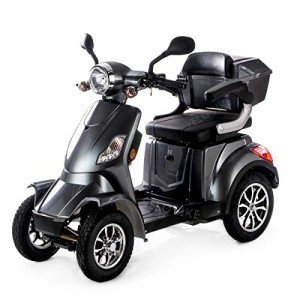Best Mobility Scooters Tips From The Best In The Industry
Mobility Scooters: A Comprehensive Guide
Mobility scooters have actually ended up being an important mode of transport for lots of people facing mobility difficulties. This post explores the different facets of mobility scooters, including their types, advantages, features, and a guide for potential purchasers.
Understanding Mobility Scooters
Mobility scooters are electrically powered devices developed for individuals with limited mobility. They supply a means of transport for individuals who may have trouble walking but still wish to keep their self-reliance. They are available in numerous styles and features to cater to a broad variety of needs.
Kinds Of Mobility Scooters
Mobility scooters can usually be classified into 3 primary types:
Type
Description
Best For
Compact Scooters
These are small and lightweight, perfect for inside your home and short journeys.
Users with restricted storage area or those who take a trip often.
Mid-size Scooters
A balance between portability and stability, suitable for both indoor and outside usage.
Those who require to cover a variety of terrains.
Heavy-duty Scooters
Big and robust, created for rugged outdoor use and heavier people.
Users needing additional weight capability or going off-road.
Key Features of Mobility Scooters
The choice of mobility scooter typically depends on the features that line up with individual needs. Here are some of the essential features to think about:
Weight Capacity: Mobility scooters include various weight limitations. cheapest mobility scooters is important to select a scooter that can properly support the user's weight.
Variety: The distance a scooter can travel on a single charge differs. Depending upon user needs, one may choose scooters with a variety of as much as 40 miles.
Speed: Most mobility scooters can reach speeds between 4 to 8 miles per hour. Consider what speed is comfortable and safe for the desired environment.
Turning Radius: A compact turning radius is important for indoor use, enabling for simpler navigation in tight areas.
Battery Type: The type of batteries utilized can affect the scooter's performance. Lead-acid and lithium-ion batteries are the most common.
Benefits of Using Mobility Scooters
The advantages of mobility scooters extend beyond just transport. Some key advantages consist of:
Independence: Users can browse their environment without relying on caregivers, promoting independence and self-esteem.
Health Benefits: Using a scooter can encourage outside activity, resulting in physical and mental health improvements by lowering sensations of isolation.
Convenience: Scooters can quickly be run in numerous environments, whether indoors, in shopping malls, or outdoors.
Important Considerations When Buying a Mobility Scooter
When buying a mobility scooter, numerous factors to consider can help ensure that you choose the right model:
Assess Individual Needs:
- Mobility level: Consider just how much help the individual will need.
- Variety of usage: Determine where the scooter will mainly be used (inside, outdoors, on rough terrains, etc).
Test Drive:
- Always test drive a number of models to discover a suitable fit. Focus on convenience, ease of steering, and the scooter's responsiveness.
Review Safety Features:
- Look for scooters with appropriate safety features like lights, indicators, and anti-tip styles.
Examine Warranty and Service Options:
- A dependable warranty and readily available service options are crucial for long-term usage.
FAQs about Mobility Scooters
**1. How fast do mobility scooters go?Mobility scooters generally have speeds varying from 4 to 8 mph, with most designed for safety rather than high-speed travel. 2. Are there weight constraints on mobility scooters?Yes, mobility
scooters feature specific weight limitations, typically ranging from
250 lbs to over 500 lbs, depending on the design. 3. Can mobility scooters be used indoors?Certain designs, especially compact scooters, are specifically designed for
**indoor usage and are simpler to steer in tight spaces. 4. How often do the batteries need to be replaced?Battery life can differ based upon usage, however generally, with appropriate care, batteries may last between 1 to 3 years before needing replacement
**. 5. Are mobility scooters covered by insurance?Coverage can vary, however some insurance strategies, consisting of Medicare and Medicaid, might cover part of the expense. It's advised to contact specific insurance suppliers. Mobility scooters work as a
important tool for numerous individuals, enabling them to maintain
their freedom and independence. By understanding the various types and features of mobility scooters, individuals can make educated choices tailored to their particular requirements.
Whether utilized for errands, socializing, or leisurely activities, mobility scooters can boost the lifestyle for those with mobility limitations. Purchasing a mobility scooter is a decision that can significantly impact an individual's life. Therefore, people should thoroughly evaluate their options and pick a design that best aligns with their way of life and mobility requirements
.  ******
******